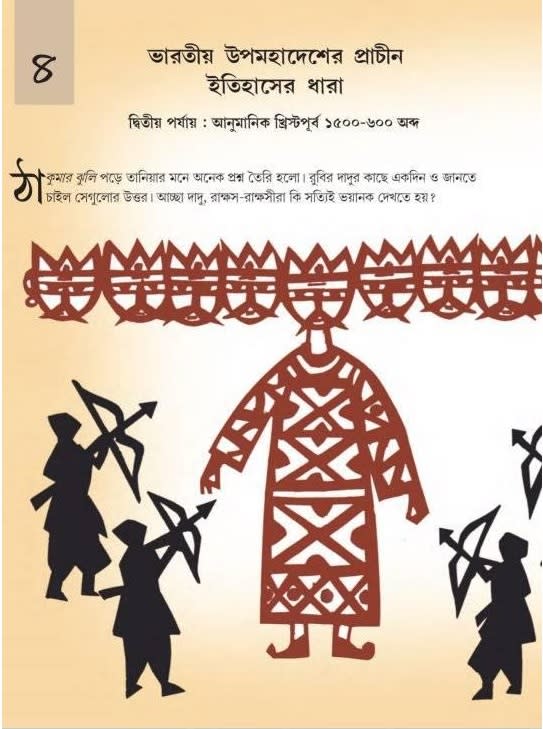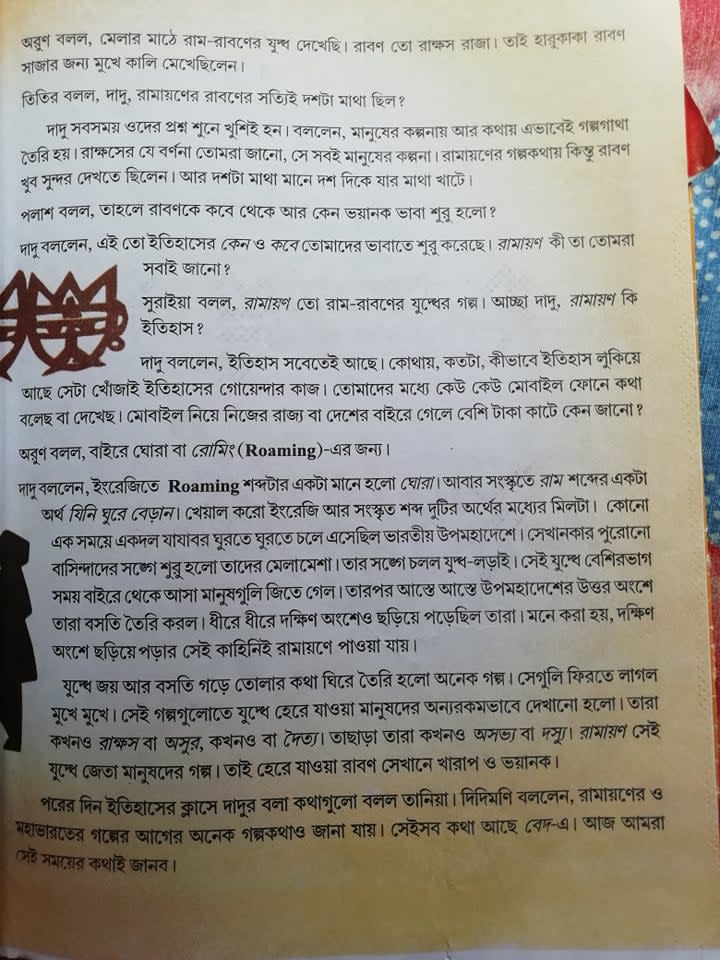Lord Ram was a 'foreign invader', Ravan a victim, says West Bengal textbook

A bizarre claim made in a West Bengal school book was first unraveled by a Twitter user and subsequently shared by netizens across social media platforms.
While many users laughed at the absurdity of what innocent children were being taught, the vast majority has taken serious umbrage at the outright fallacy being fed to young, impressionable minds in West Bengal, in the garb of education.
In West Bengal, the text book of 6th std says Rama was a foreigner who came to India and invaded it.
And the English word 'roaming' is originated from 'rama'.
And the native Indian are monsters(rakhshas).@AskAnshul@DrRPNishank@TheJaggi@ShefVaidya@UnSubtleDesi pic.twitter.com/hdVwntJqrA— DoctorFB (@DoctorFunnyBone) May 16, 2020
What was provided in the now-viral tweet was just a cropped image that offered no clarity about the book, the publication or other information associated with its content. Hence, the veracity of it was not established.
Turns out, the book exhibited above, is a reference book that assists in studying West Bengal State Board’s textbook for sixth grade, Atit O Aitijya, published by Professor Nabanita Chatterjee, edited by Shirin Masood and printed by West Bengal Textbook Corporation.
The assertions made about Lord Ram and Ravan in the aforementioned images are exercises corresponding to Chapter 4 of the textbook compiled to encourage curiosity in students by presenting segments of historical facts.
Narrated through a dialogue between a grandfather and his grandchildren, Chapter 4 of this book suggests all imageries depicted in the Ramayana are mere figments of human imagination.
_____________________________
West Bengal text book is teaching this to children:
1. Ram was a foreigner who invaded India
2. The Ramayan is a figment of imagination
3. Ravan was a native of India, he was the victim
4. Just because Ramayan was written by the victors, Ravan is show as a villain
5. Ram in Sanskrit means ‘roaming’ (which is wrong)
_____________________________
Its explanation of the ten heads of Ravan being, ‘one who puts his mind at work through all 10 directions’, is erroneous. Neither has the legend of Ravan sacrificing his head 10 times as penance to Lord Brahma been evoked in the designed conversation nor has the book detailed how these 10 heads symbolized 6 Shastras and 4 Vedas, thus elevating Ravan to the stature of the great scholar he was.
As the chapter progresses through consecutive paragraphs, 11-12-year-olds following the narrative are introduced to the idea that Ram was a nomadic invader who entered the Indian sub-continent from foreign lands.
Lord Ram’s attempts to make inroads into India led to conflicts with the natives. The conflicts resulted in battles, which mostly concluded with the invader’s victory. Representatives of the victors would record these battles exaggerating their valour and dismissing the defeated forces as monsters of debauched moral values, the ‘lowly Rakshas’, the book suggests.
When the ‘nomadic’ Ram, claims the textbook, tried invading the southern part of the Indian subcontinent, he was confronted by Ravan, and defeated him in a war; the Ramayana chronicles this battle, and because history is always written by the victors, the victim Ravan has been projected in a negative light through fables passed on through generations.

In India most people, irrespective of the religion they follow, are aware of the basics of the Ramayana. Which is why the perpetration of such fallacies about Lord Ram and Ravan through a school textbook is quite shocking.
It has been stated in Atit O Atijya that the name of Ram bears a similarity to the English word ‘roaming’, and in Sanskrit translates to ‘one who keeps roaming’. Nothing can be far from the truth: the word ‘Ram’ holds a plethora of meanings in Sanskrit but none being what has been presented in the book.

Going by Ramatey Iti Ramah, ‘Ram’ means ‘joy’. ‘Ram’ also translates to pleasing, charming or dark-hued. On the other hand, the Sanskrit words for ‘one who roams around’ are yayawar, charin, pathik, or charak, without any resemblance to the word ‘Ram’.
The chapter, attested by the West Bengal state board, leaves an informed mind searching for a rationale behind such horrid distortions. This is not the first time West Bengal board has been caught twisting facts.
Back in 2014, it had attracted a huge backlash for labeling great freedom fighters, Shaheed Khudiram Bose and Prafulla Chaki as ‘terrorists’ to the younger generations.

In 2017, the education machinery of the state had replaced the age-old Bengali word for rainbow, Ramdhenu, with ‘Rongdhenu’ in the 7th standard book, Barnali, canceling out the ‘Ram’ in the word, to ‘uphold secularism in the state’.
It had also incorporated the Urdu word Aasmani to denote the colour ‘sky-blue’, though Bengalis already had Aakashi for this colour.


